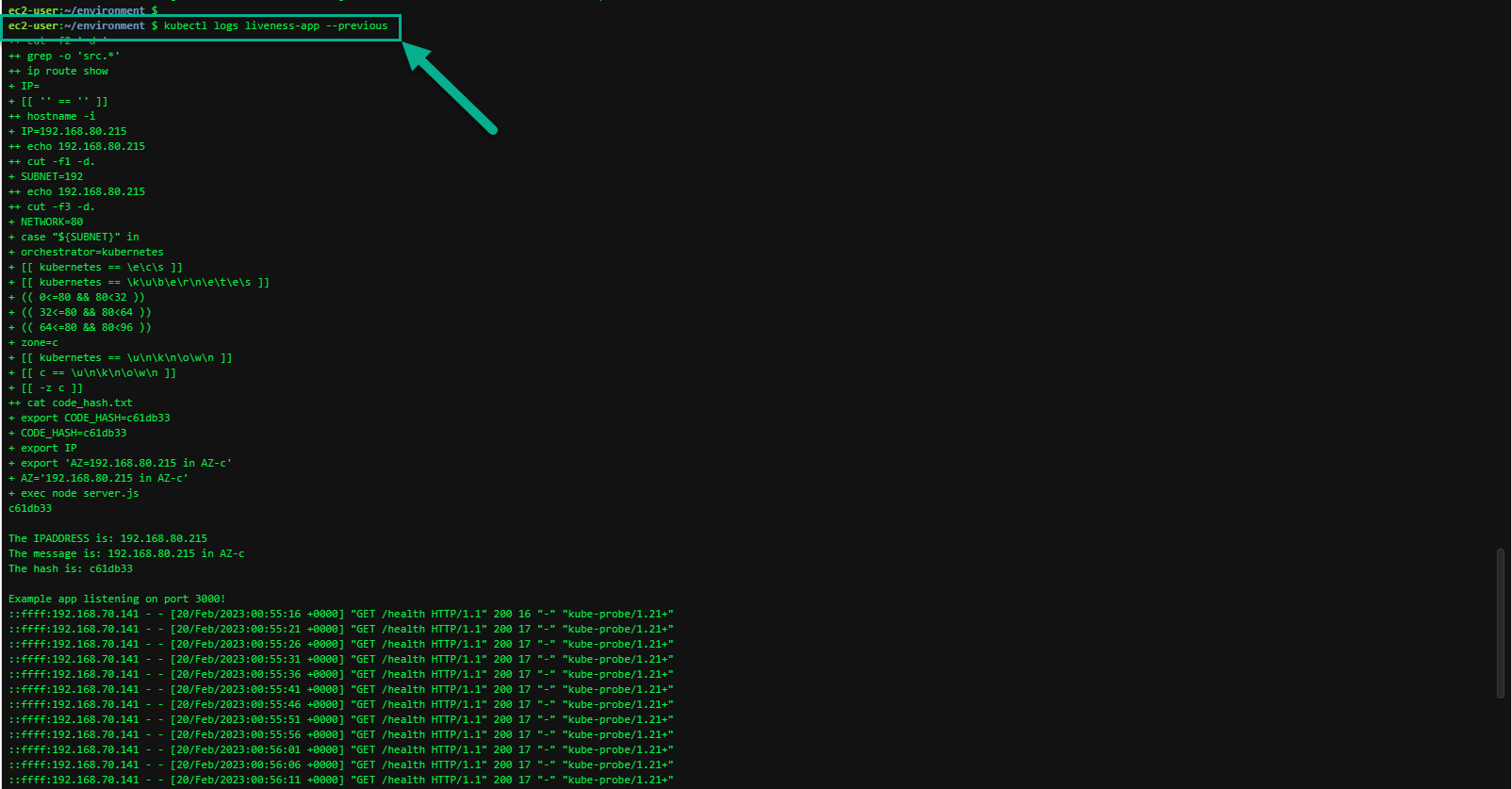Configure Livenesss Probe
Configure the Probe Use the command below to create a directory
mkdir -p ~/environment/healthchecks
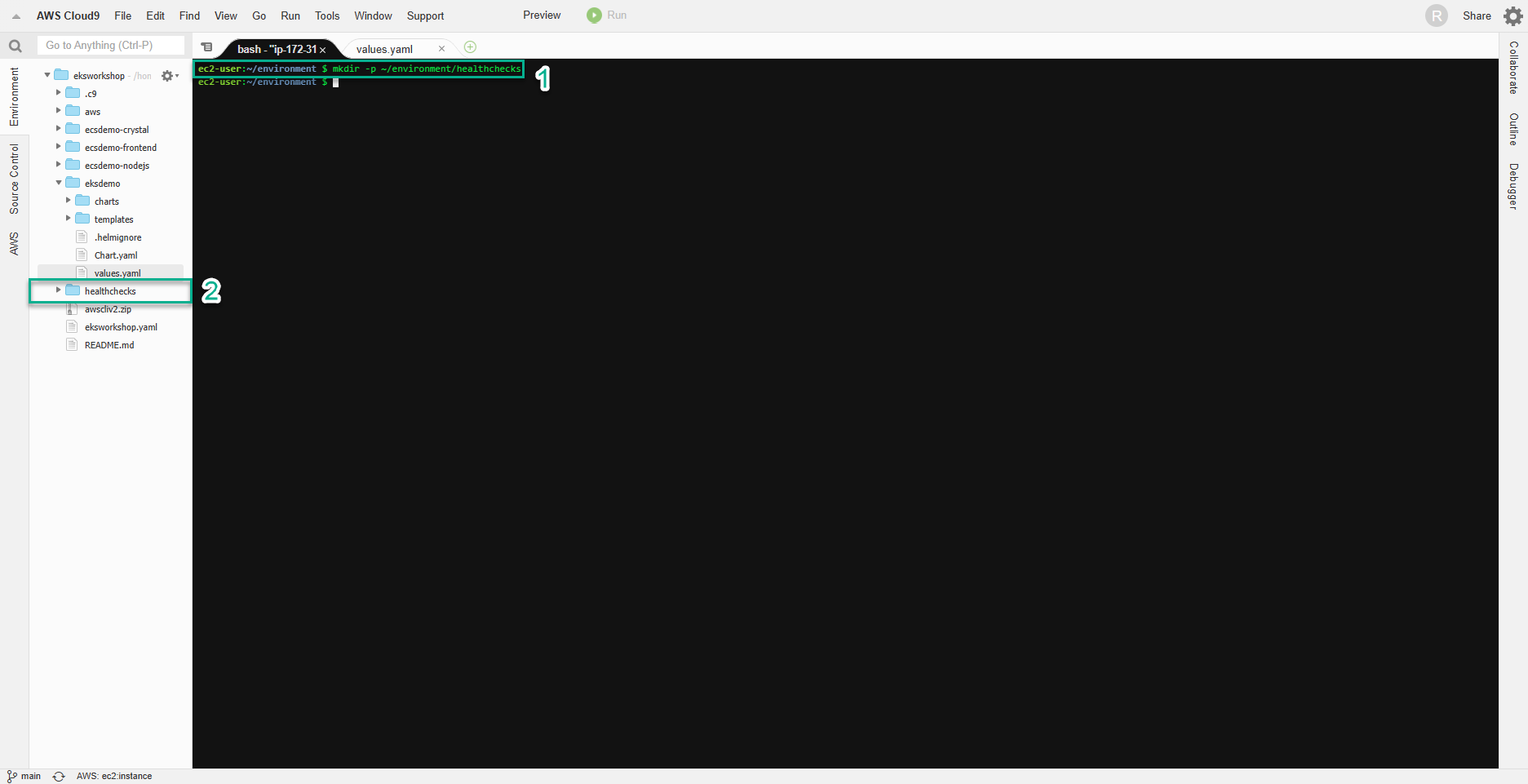
Run the following code block to populate the manifest file ~/environment/healthchecks/liveness-app.yaml. In the configuration file, the livenessProbe field determines how kubelet should check the container in order to consider whether it is healthy or not. kubelet uses the periodSeconds field to do frequent check on the Container. In this case, kubelet checks the liveness probe every 5 seconds. The initialDelaySeconds field is used to tell kubelet that it should wait for 5 seconds before doing the first probe. To perform a probe, kubelet sends a HTTP GET request to the server hosting this pod and if the handler for the servers /health returns a success code, then the container is considered healthy. If the handler returns a failure code, the kubelet kills the container and restarts it.
cat <<EoF > ~/environment/healthchecks/liveness-app.yaml
apiVersion: v1
kind: Pod
metadata:
name: liveness-app
spec:
containers:
- name: liveness
image: brentley/ecsdemo-nodejs
livenessProbe:
httpGet:
path: /health
port: 3000
initialDelaySeconds: 5
periodSeconds: 5
EoF

Let’s create the pod using the manifest:
kubectl apply -f ~/environment/healthchecks/liveness-app.yaml

The above command creates a pod with liveness probe.
kubectl get pod liveness-app

The output looks like below. Notice the RESTARTS
NAME READY STATUS RESTARTS AGE
liveness-app 1/1 Running 0 11s
The kubectl describe command will show an event history which will show any probe failures or restarts.
kubectl describe pod liveness-app
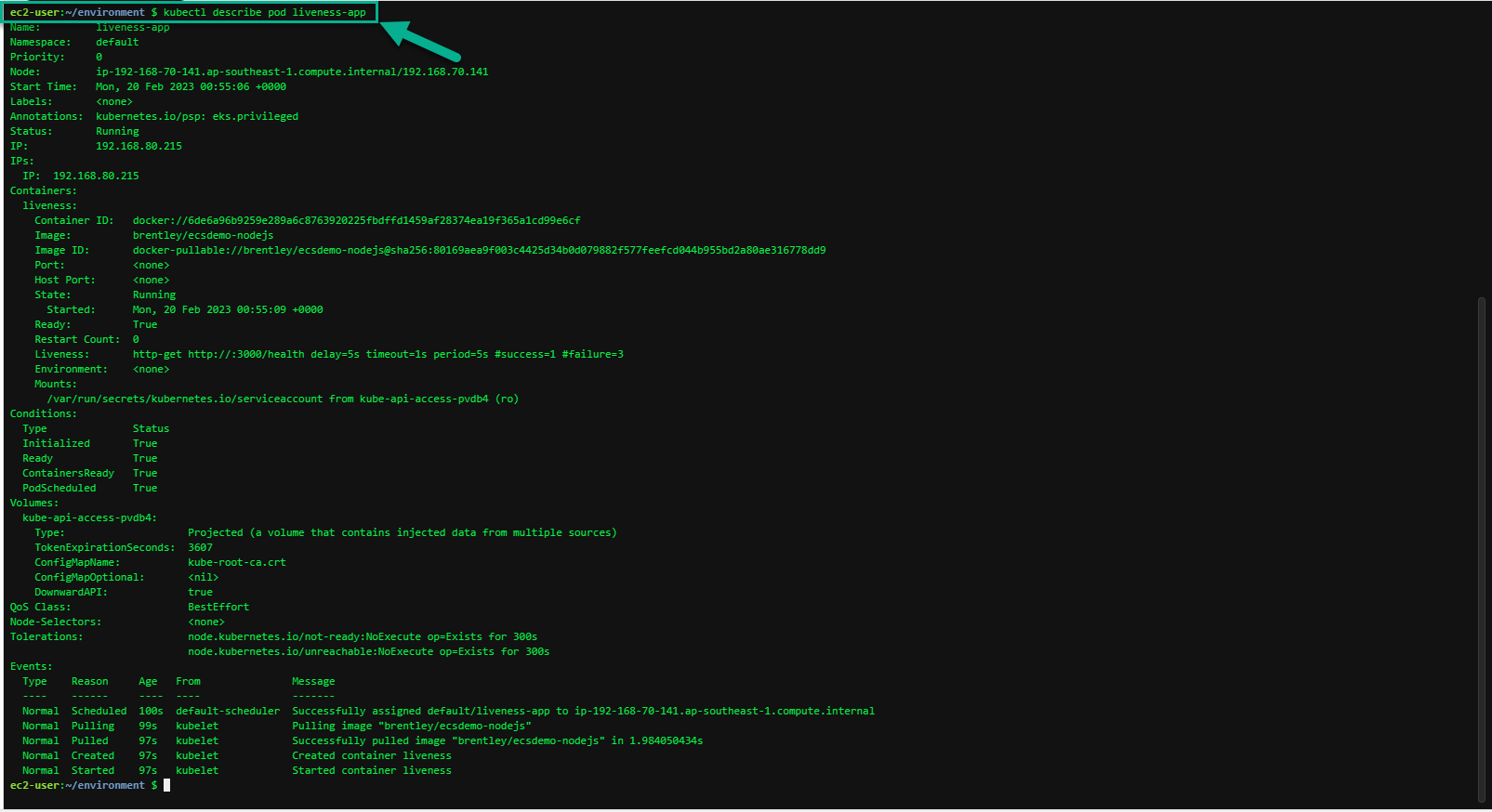
Events:
Type Reason Age From Message
---- ------ ---- ---- -------
Normal Scheduled 38s default-scheduler Successfully assigned default/liveness-app to ip-192-168-18-63.ec2.internal
Normal Pulling 37s kubelet Pulling image "brentley/ecsdemo-nodejs"
Normal Pulled 37s kubelet Successfully pulled image "brentley/ecsdemo-nodejs" in 108.556215ms
Normal Created 37s kubelet Created container liveness
Normal Started 37s kubelet Started container liveness
Introduce a Failure
We will run the next command to send a SIGUSR1 signal to the nodejs application. By issuing this command we will send a kill signal to the application process in the docker runtime.
kubectl exec -it liveness-app -- /bin/kill -s SIGUSR1 1
Describe the pod after waiting for 15-20 seconds and you will notice the kubelet actions of killing the container and restarting it.
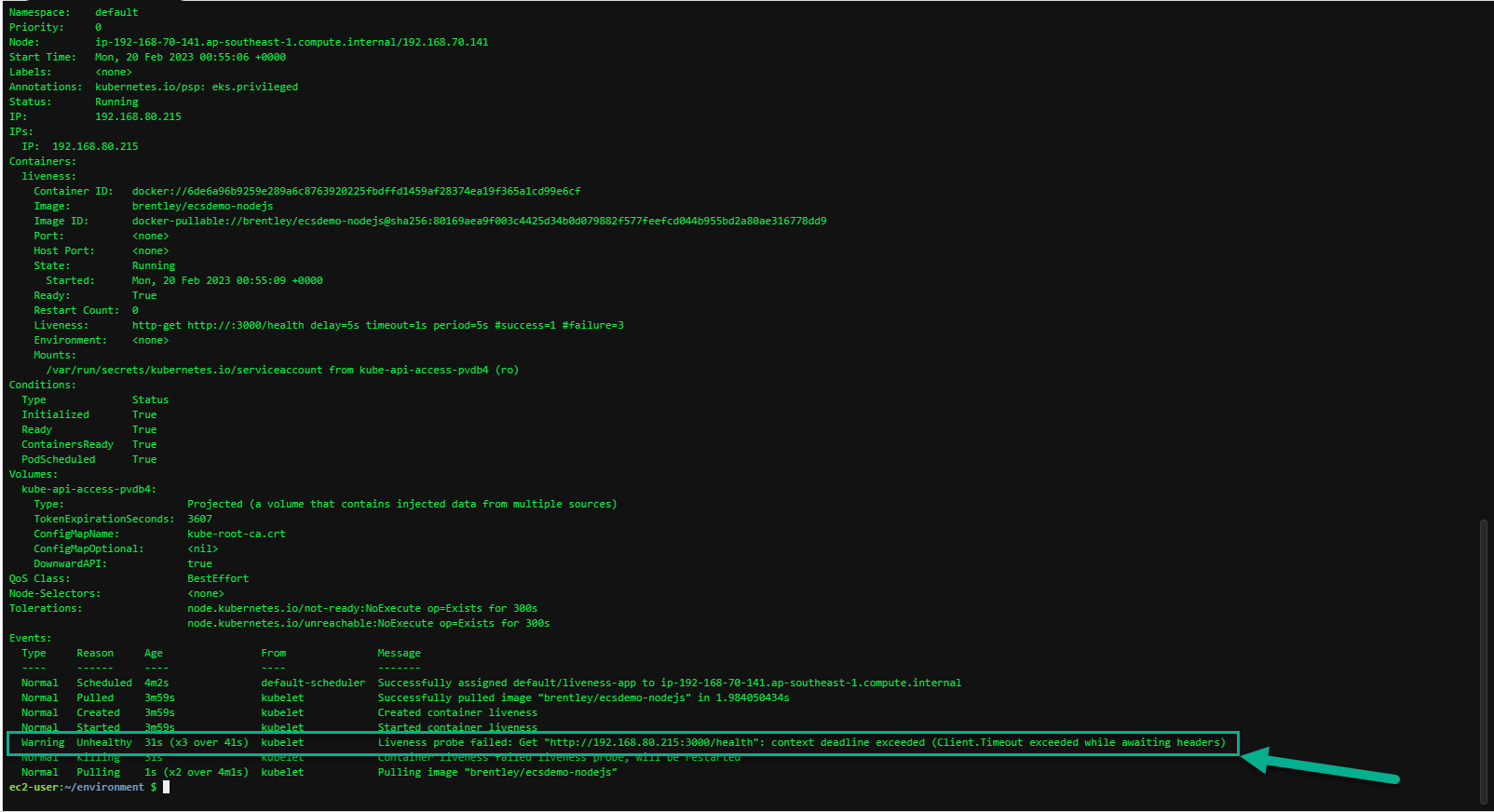
Events:
Type Reason Age From Message
---- ------ ---- ---- -------
Normal Scheduled 72s default-scheduler Successfully assigned default/liveness-app to ip-192-168-18-63.ec2.internal
Normal Pulled 71s kubelet Successfully pulled image "brentley/ecsdemo-nodejs" in 100.615806ms
Warning Unhealthy 37s (x3 over 47s) kubelet Liveness probe failed: Get http://192.168.13.176:3000/health: context deadline exceeded (Client.Timeout exceeded while awaiting headers)
Normal Killing 37s kubelet Container liveness failed liveness probe, will be restarted
Normal Pulling 6s (x2 over 71s) kubelet Pulling image "brentley/ecsdemo-nodejs"
Normal Created 6s (x2 over 71s) kubelet Created container liveness
Normal Started 6s (x2 over 71s) kubelet Started container liveness
Normal Pulled 6s kubelet Successfully pulled image "brentley/ecsdemo-nodejs" in 118.19123ms
When the nodejs application entered a debug mode with SIGUSR1 signal, it did not respond to the health check pings and kubelet killed the container. The container was subject to the default restart policy.
kubectl get pod liveness-app
The output looks like below:
NAME READY STATUS RESTARTS AGE
liveness-app 1/1 Running 1 12m
How can we check the status of the container health checks?
kubectl logs liveness-app
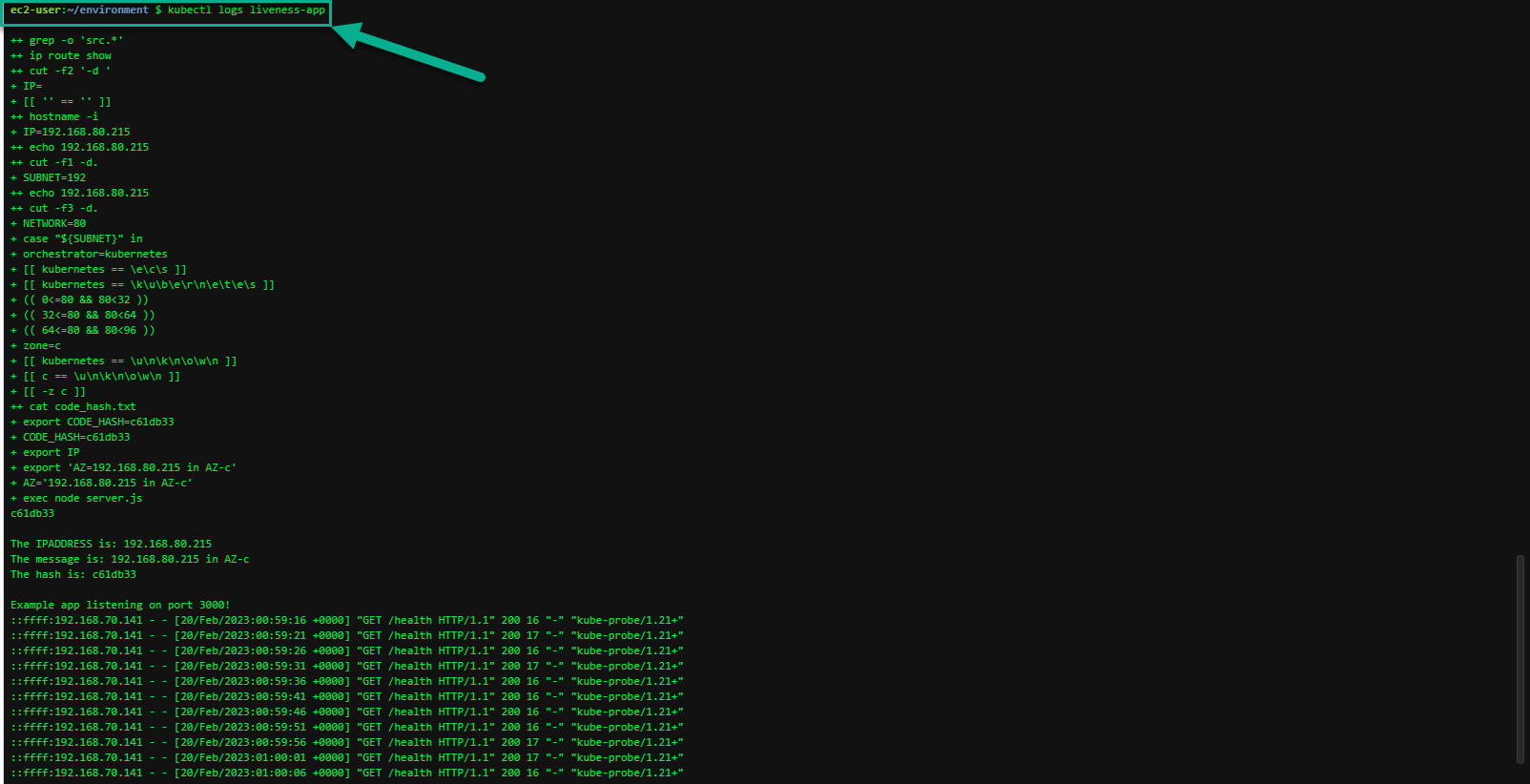
You can also use kubectl logs to retrieve logs from a previous instantiation of a container with --previous flag, in case the container has crashed
kubectl logs liveness-app --previous
